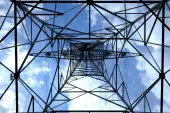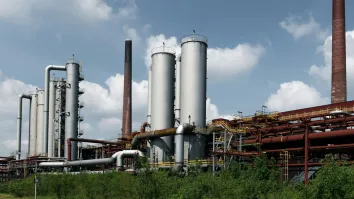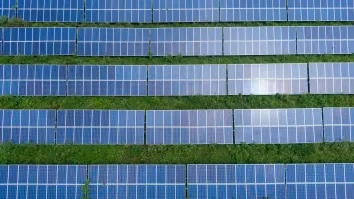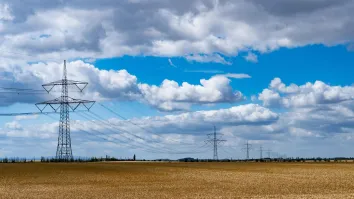
What to expect from Malaysia’s drive to create a green economy
Will all the efforts to reduce dependence on thermal energy sources bear fruit or go in vain?
Research firm GlobalData presents a review of what happened from 2000-2010 and some growth forecasts in the years ahead for Malaysia’s power market as the government diversifies its power mix through the Fuel Diversification Policy.
Capacity and Reserve Potential
Malaysia has an installed base of 26,602 MW in 2010, which has been growing at a very high CAGR of 7.3% between 2000 and 2010. During the future period, the country is expected to increase its installed capacity to 49,966 MW, at a high CAGR of 6.7%. Thermal is the dominant power resource, accounting for 89.3% of the installed capacity. By 2020, the thermal dominance is expected to reduce with the increase in non-thermal fired plants. Hydro is expected to increase its capacity share from 8.2% in 2010 to 15% by 2020.
Malaysia has thermal and coal fired plants predominantly. Between 2000 and 2009 the production increased at a CAGR of 2.9% which suffices the country’s natural gas demand. However, the country ranks number 62 in coal production, and it has to import coal for its requirements. With the increasing focus on coal technology, it is expected that the country would depend on imports to fulfill part of its fuel demands.
Regulatory Scenario
In August 2009, the country launched the national green technology policy which made it mandatory that the renewable power produced in the country would be purchased by the big transmission companies from the eligible participants determined by the government. There was an energy efficiency improvement program to promote energy efficiency in the industrial and commercial sector as well, and around $6.3m was allotted for the program. This program helped save a lot of electricity and fuel consumption in the country.
Other than the expected biomass increase, the solar PV installation is expected to drive future installation. The country has set a tentative target that by 2020, renewable energy can account for over 2,080 MW, and by 2030 it could account for up to 4,000 MW. Feed-in tariffs and other incentives required to achieve this target are expected to be in place.
The government is considering nuclear as a non-thermal source option as well. In 2008, it was announced that the option of building a nuclear power plant would be considered after exhausting the renewable potential. The government is expected to review the decision by 2013 after looking at the nuclear plan feasibilities, and if it is cleared there are plans to build its first nuclear plant during the early 2020s. The country is expected to have more stringent emission controls due to its adoption of the Kyoto protocol and its focus on reducing greenhouse gas emissions in the country.
Transmission and Distribution Infrastructure
The transmission and distribution losses in the country were only 1.6% in 2007, which is one of the best in the region. The electrification ratio in 2010 was 97%, and by 2015 the government aims to increase this to 100%. The transmission grid in the country has grown at a CAGR of 3.7% between 2000 and 2010. Between 2011 and 2020, the transmission infrastructure is expected to grow from 24,465 circuit kilometer (Ckm) to 33,402 ckm by 2020, at a CAGR of 3.5%. The distribution line infrastructure is expected to grow at a CAGR of 3.8% during the same period.
Thermal Power is the Dominant Source in the Power Mix
The cumulative installed capacity for power in Malaysia was estimated to be 26,602 MW in 2010. Thermal fuel sources – coal, oil and gas – were the highest contributors, with a combined share of 89.3% or 23,765 MW of the total installed capacity. The thermal power installed capacity grew at a Compound Annual Growth Rate (CAGR) of 7.5% during 2000-2010. Hydropower came a distant second, with a share of 8.2% or 2,171 MW of the total installed capacity. Renewable energy sources (including biopower and solar) contributed 2.5% to the cumulative installed capacity in 2010.
During the forecast period 2011-2030, cumulative installed capacity is expected to grow at a CAGR of 5.3%, reaching a total of 73,981 MW in 2030. The electricity installed capacity is expected to grow at a higher rate than generation, as the country is focusing on expanding its reserve margins in order to meet the peak demand, when required. Thermal fuel sources will remain the highest contributor but will witness a decline in their contribution. The share is expected to decline to 75.9% in 2030 due to an increasing focus on clean energy sources such as hydro and renewable energy.
Hydropower is expected to increase its share of the installed capacity to 19.1% by 2030. Similarly, renewable energy sources are also expected to increase their share to 5% by 2030.
Continued Growth in Power Generation
As Malaysia has high industrial activities coupled with increasing demand from the household sectors, its consumption of electricity is expected to increase further. Historically, electricity generation has been increasing at a CAGR of 5.6% between 2000 and 2010. As a result, the total generation has been increasing during the period 2000-2009. In 2000, the country’s total electricity generation was 66,929 GWh, which increased to 115,438 GWh in 2010.
To contact the journalist, you may send your message to [email protected]



















 Advertise
Advertise






